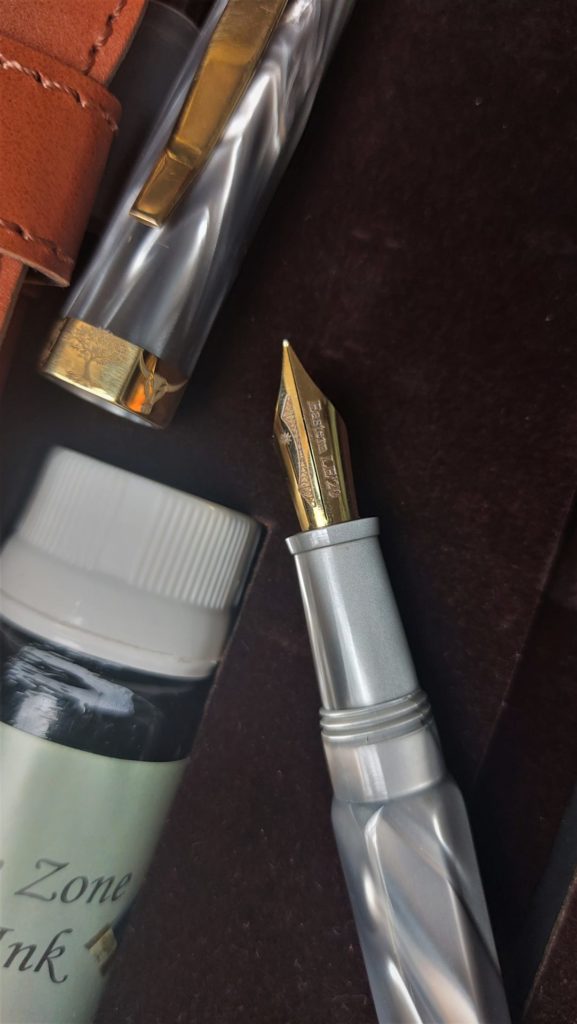East India LE 2020 chalks a first for Indian pen lovers
The Indian fountain pen manufacturers are a risk averse lot, say the apologists. Ask the critics and one is greeted with a fusillade of sterner stuff – that they have zero research and development; are content only with lifting and replicating designs of famous models; that there is no experimentation … blah, blah, blah! Ask the pen turners – the so-called hand-turned pen makers who cater primarily to the collectors and the excuse is also dog-eared, that the market is not deep enough to justify trialling, though they never talk about the per unit profitability, point out the sceptics and that is where things had settled, in a stalemate.
That is till the beginning of the 2020, when the members of the East India Fountain Pen Lover’s Forum decided to take things in their hands and break the impasse. “The idea behind the East India LE 2020 is simple” said the man who has pioneered the act of taking the fountain pen community into the social media in these parts of the world, “to create a fountain pen from the scratch for the FP lovers to celebrate and more importantly, to communicate the fact that it can be done”. Now that is easier said than done as we all know – there are more opinions to contend with in the groups than there are often members therein; besides, the task in itself was Herculean to say the least, given the obviously lukewarm interest generated by the Penturners. While everybody wanted the best, not many were willing to put the money where their mouths were, something that was complicated by the pandemic induced lockdown and the shrinking savings.
Anyway, to cut a long story short, the design was finalised, the blanks secured from Omas, the nibs specially crafted by Kanwrite, the complementary inks bottles created exclusively by Krishna Inks and the pens turned by Lotus, not to mention the wooden box that too was made to order. “We wanted the East India LE 2020 pen to be representative of the fraternity’s passion and therefore, not restrict it to any particular region, which explains the extent to which we have gone to ensure that only were the best minds were involved but that the best ingredients were also used. Being a Numbered, Limited-Edition piece, extensive discussions in the group agreed to a certain pricing which has been arrived at, on a cost-plus basis and is therefore, extremely attractive to put things mildly”. It will not be out of place to mention here that in terms of sheer commercial compulsions, the pen, even while it was being made, was a highly desirable one, its allure-factor sure to go up even further with time.
From the iconic Howrah Bridge on the nib to the six symbols representing the characteristic features of the eastern India, the East India LE 2020 pen has been designed as a tome, a salutation to the life and styles of the region and is a celebration of the unique socio-cultural influences of the area. However, what makes the pen stand out – “head and shoulders above the rest” adds a member who was closely associated in the process – is the deft craftsmanship of Arun Singhi of Lotus Pens who has personally created every one of the 27 pens that are now being unveiled. The rest 23 are being saved for fashioning which will be taken up in batches, based on the orders.
Similarly, there is nothing to write about the Kanwrite nibs that have been fashioned under personal supervision of Sandeep Awasthi the supremo of India’s most loved maker of fountain pen nibs. As for the Omas blank all one can say is that the iconic brand has since ceased operations, which has already made the pens move a few notches up the desirability scale, which can only pick up further with time.
The names associated with this maiden effort – Dr Nirjhar Mondal a medical practitioner with Calligraphy in his soul; Dr Samrat Ganguly with a collection of writing instruments that is the cynosure of many eyes; Arijit Bhattacharyya fountain pen collector by passion and a doctor by profession; Manoj Das, a young Doctor; Prof Subhasish Bhattacharjee an academician based out of Siliguri and the community’s very own sister-at-large Sukla Roy – are all accomplished collectors, representing an enviable body of knowledge about both the functionality and the aesthetics of fountain pens. As a matter of fact, Sulka Roy’s contribution – right from the conception through the making of the box to the hugely successful conduct of the launch event – cannot be overemphasised. Naturally, when such an august gathering of scribes put the heads (and hearts) together to create a writing instrument, it is but expected that perfection will be achieved many times over. Well, not only has such perfection been achieved, but in the process many myths have been shattered with the entire symphony of creation conducted by one of the world’s most celebrated authorities on Indian fountain pens, Yusuf Mansoor, who was ably assisted by Samit Dutta who is no less as a collector and an artist to boot and Sulka Roy.
The pen comes in a wooden box with a bottle of ink made exclusively by Dr Srikumar Neethu of Krishna Inks; a single pen leather carry case from Say FP; a spare nib unit and a small booklet that doubles up as the certificate of authenticity. The booklet is exhaustive and lists not only the necessary information like the specifications, but also has a running commentary, providing a rare peep into the story about the making of the pen.

